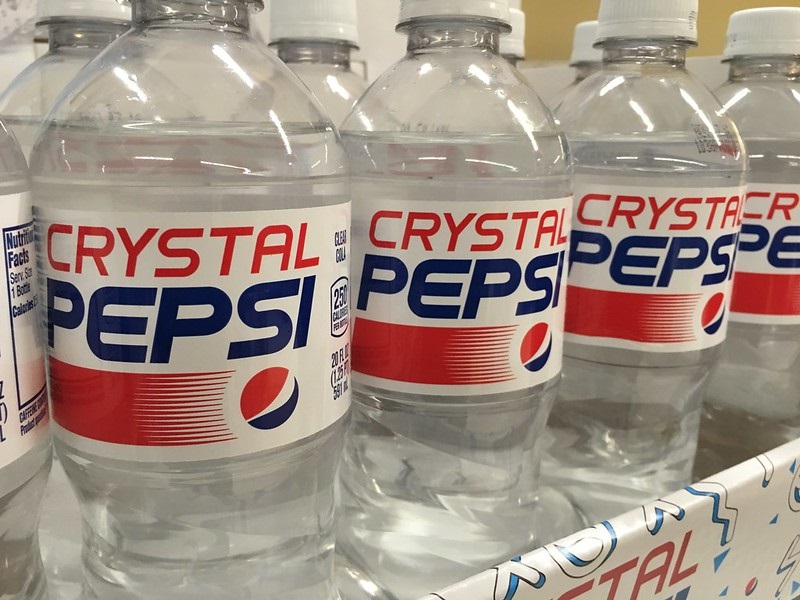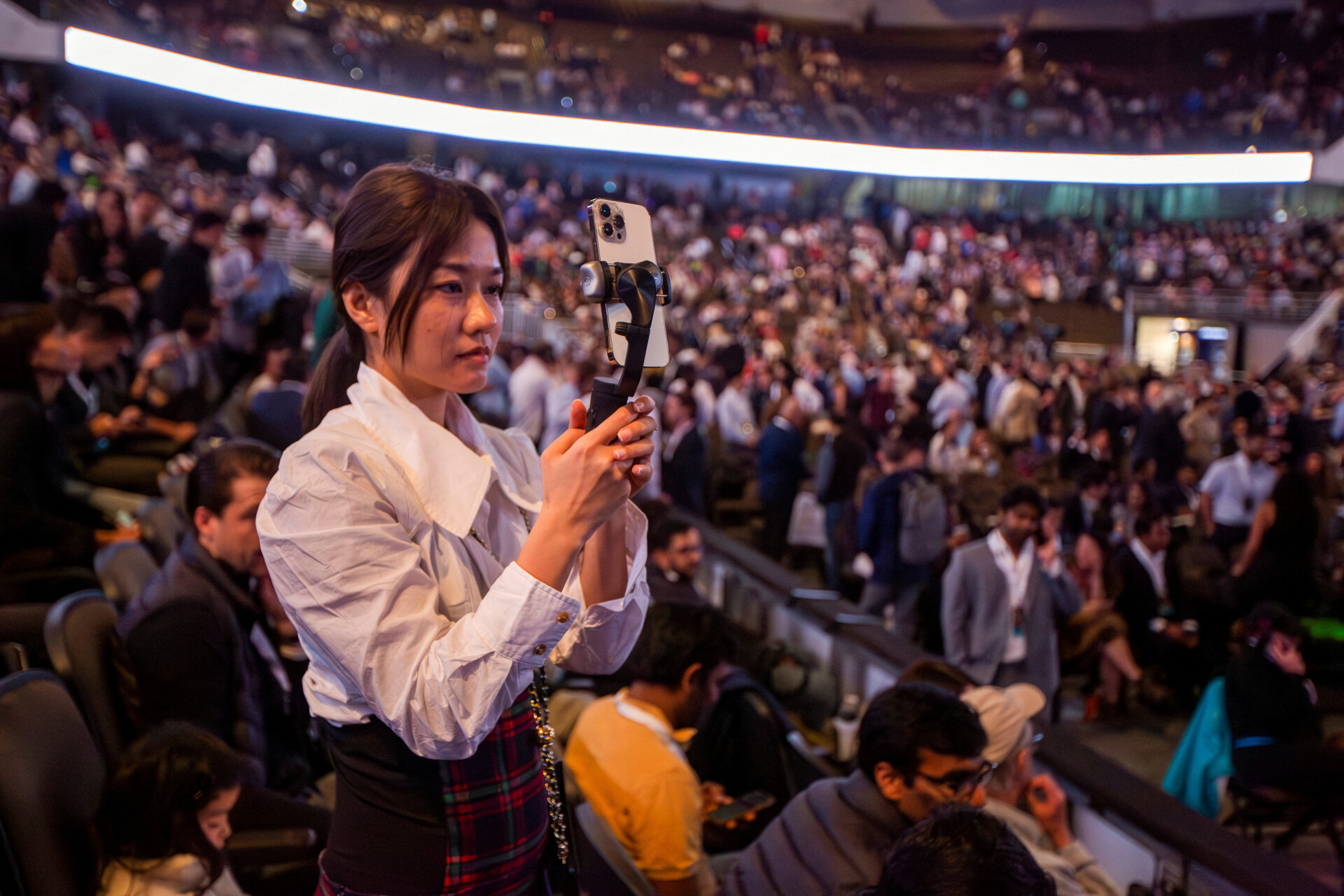 Credit: Mike Mozart, CC BY 2.0/Flickr
Credit: Mike Mozart, CC BY 2.0/FlickrCrystal Pepsi, a carbonated soft drink produced by PepsiCo from 1992 to 1993, is considered as one of the biggest flops in soft drink history.
This unique soft drink was aimed to capitalize on a growing trend towards novelty clear products, such as clear soap and clear deodorant. Crystal Pepsi was marketed as a caffeine-free “clear alternative” to normal colas. Its official slogan was “You’ve never seen a taste like this”.
“It could have been more than just a novelty,” said David Novak, the former Pepsi marketing executive who created the soft drink. “It was probably the best idea I’ve ever had — and the most poorly executed.”
Midway through the Super Bowl of 1993, a commercial for a revolutionary new “clear cola” sparked a national craze. Set to the Gen X anthem “Right Now” by Van Halen, the ad was supposed to feel edgy.
It featured an astronaut, a rhino, and a woman guzzling the translucent elixir. “Right now, we’re all thirsty for something different,” it proclaimed. “Introducing Crystal Pepsi.”
The soft drink quickly became the cool kid of the vending machine. Marketed as a “pure” and “natural” spin-off of classic Pepsi, it was showcased on CBS Evening News, parodied on Saturday Night Live, and begrudged by competitors at Coca-Cola.
From high school cafeterias to Wall Street power lunches, millions of Americans were excited to try it, says a report at thrillist.com.
Crystal Pepsi was poised to become a billion-dollar idea
Crystal Pepsi was poised to become a billion-dollar idea. Instead, it was a colossal flop.
Less than a year after the commercial hit the airwaves, the soda was yanked from the shelves. It became a cultural laughingstock and was later dubbed one of the biggest product failures of all time by TIME Magazine.
One of the key factors for the failure of Crystal Pepsi was the lack of a clear target audience. PepsiCo’s marketing strategy was aimed at capturing the attention of consumers who preferred a healthier alternative to traditional soda.
However, the company failed to account for the fact that these consumers may not actually have been interested in the fizzy and sweet taste of a carbonated soda.
Furthermore, the branding itself failed to appeal to the consumers’ desire for healthy products, as the ‘clear’ appearance of the drink did not necessarily indicate that the drink was a ‘healthier’ option.
Another factor contributing to the failure of Crystal Pepsi was the pricing strategy used by PepsiCo. The company priced the product higher than the traditional cola flavor of Pepsi, which consequently led to a significant reduction in its target audience.
Many consumers were unwilling to pay the premium price for a new product that they did not have any prior knowledge of, especially when it was unclear whether it would meet their taste preferences.
The introduction of Crystal Pepsi also faced challenges in distribution and manufacturing. The introduction of a new product necessitated a significant investment in new manufacturing processes and machinery.
Additionally, the clear appearance of the drink posed challenges in terms of packaging, as the drink was more sensitive to light and could potentially lose color and appeal if not packaged correctly.
The failure of Crystal Pepsi can be attributed to a combination of misaligned, ineffective and inefficient marketing strategies, pricing policies, and manufacturing and distribution challenges.
The lessons learned from this failed experiment can serve as a valuable case study for companies introducing new products to the market.
It reinforces the fact that companies need to be very mindful of their target audience, have a viable pricing strategy, and align their branding and marketing strategies with the product’s value proposition.
In 2022, Pepsi brought back the soda for a limited-time run to celebrate its 30-year anniversary. However, Crystal Pepsi won’t available to buy.
Instead, it was part of a contest where fans can win the beverage by using the hashtag #ShowUsYour90s on Twitter. Pepsi wanted consumers to post pictures of themselves in the ’90s, and the company chose its favorite 300 photos.
Those lucky 300 received six 20 ounce bottles of Crystal Pepsi – and were the first to get their hands on the drink in years.

 1 year ago
107
1 year ago
107











 English (US)
English (US)